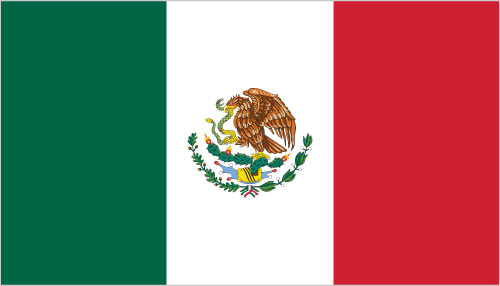
Source: World Bank
Relationships & Communication
The right connections facilitate business success.
You will be judged by the person who introduces you and changing this first impression is nearly impossible.Since the initial meeting is generally with someone of high stature, it is important that your delegation include an upper-level executive.
After the initial getting-to-know-you meeting, the senior executive may not attend meetings or be visible.
This indicates you are now getting down to business and they are no longer needed to smooth the introduction.
Demonstrating trustworthiness, sincerity, and integrity are crucial to building relationships.
Expect to answer questions about your personal background, family and life interests.
Business Meeting Etiquette
Business appointments are required and should be made at least 2 weeks in advance. Reconfirm the appointment one week before the meeting.
Reconfirm the meeting again once you arrive in Mexico and make sure that the secretary of the person you will be meeting knows how to contact you.
It is important that you arrive on time for meetings, although your Mexican business associates may be up to 30 minutes late.
Do not appear irritated if this occurs as people often run behind schedule.
Meetings may be postponed with little advance warning.
Initial meetings are formal.
Have all written material available in both English and Spanish.
Agendas are not common. If they are given, they are not always followed.
Business Negotiation
Since Mexicans are status conscious, you should always have someone on your negotiating team who is an executive.
If you do not speak Spanish, hire an interpreter.
It will take several meetings to come to an agreement.
Face-to-face meetings are preferred over telephone, letters or email.
Negotiations and decisions take a long time. You must be patient.
Deadlines are seen as flexible and fluid, much like time itself.Negotiations will include a fair amount of haggling. Do not give your best offer first.Do not include an attorney on your negotiating team.
Business Dress
Dress as you would in Europe.
Men should wear conservative, dark coloured suits.
Women should wear business suits or conservative dresses.
Business Cards
Business cards are exchanged during introductions with everyone at a meeting.
It is advisable to have one side of your business card in Spanish.
Business cards should contain both your professional and educational qualifications.
Present your business card with the Spanish side facing the recipient.
Stores are typically open from 9am to 8pm, Monday to Saturday. In the south of the country and in small towns, some stores close for a siesta between 2pm and 4pm, then stay open till 9pm. Some don’t open on Saturday afternoon.
Offices have similar Monday to Friday hours to stores, with a greater likelihood of the 2pm to 4pm lunch break. Offices with tourist-related business, including airline and car-rental offices, usually open on Saturday too, from at least 9am to 1pm.
Typical restaurant hours are 7am (9am in central Mexico) to midnight. If a restaurant has a closing day, it’s usually Sunday, Monday or Tuesday. Cafés typically open from 8am to 10pm daily.
Banks are normally open 9am to 5pm Monday to Friday, and 9am to 1am Saturday. In smaller towns they may close earlier or not open on Saturday. Casas de cambio (money-exchange offices) are usually open from 9am to 7pm daily, often with even longer hours in coastal resorts.
Post offices typically open from 8am to 6pm Monday to Friday, and 9am to 1pm Saturday.
for our purposes opening hours are spelt out where they differ from those above.
It’s worth remembering that supermarkets and department stores usually open from 9am or 10am to 10pm every day, and stores in malls and coastal resort towns often open on Sunday too.